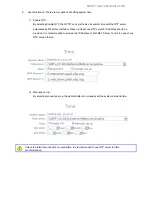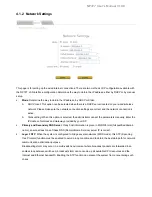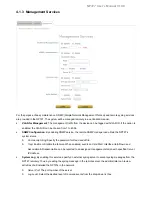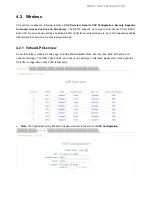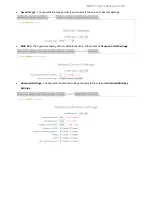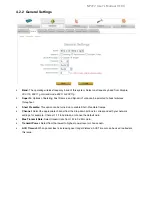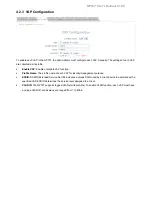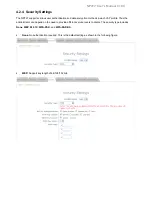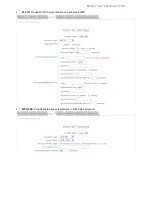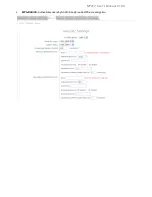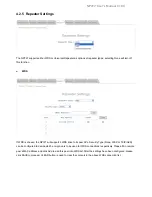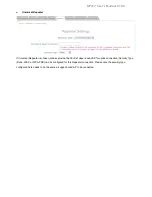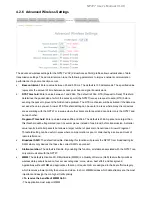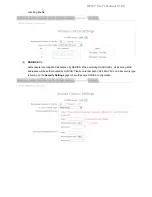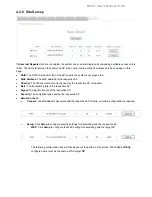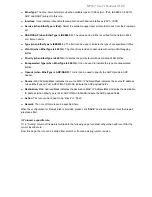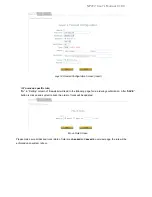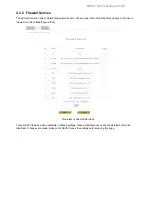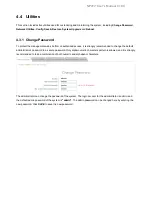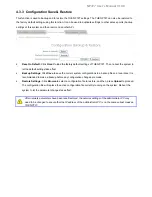
NP727 User’s Manual V1.00
4.2.6 Advanced Wireless Settings
The advanced wireless settings for the NP727’s VAP (Virtual Access Point) profiles allow customization of data
transmission settings. The administrator can tune the following parameters to improve network communication
performance if a poor connection occurs.
y
Beacon Interval
: Enter a value between 25 and 500 ms. The default is 100 milliseconds. The specified value
represents the amount of time between access point beacon signal transmissions.
y
RTS Threshold
: Enter a value between 1 and 2346. The default is 2346. RTS (Request to Send) Threshold
determines the packet size at which the access point (the NP727) issues a request to send (RTS) before
sending the packet to prevent the hidden node problem. The RTS mechanism will be activated if the data size
exceeds the value you set
.
A lower RTS Threshold setting can be useful in areas where many client devices
are associating with the NP727 or in areas where the clients are far apart and can detect only the NP727 and
not each other.
Fragment Threshold
: Enter a value between 256 and 2346. The default is 2346. A packet size larger than
this threshold will be fragmented (sent in several pieces instead of one block) before transmission. A smaller
value results in smaller packets but allows a larger number of packets in transmission. A lower Fragment
Threshold setting can be useful in areas where communication is poor or disturbed by a serious amount of
radio interference.
y
Broadcast SSID
: The default is
Enable
. Disabling this function will prevent the NP727 from broadcasting its
SSID, where only devices that have the correct SSID can connect.
y
Station Isolation
: The default is
Disable
. By enabling this function, all stations associated with the NP727 can
only communicate with the NP727.
y
WMM
: The default is
Disable
. Wi-Fi Multimedia (WMM) is a Quality of Service (QoS) feature that prioritizes
wireless data packets based on four access categories: voice, video, best effort, and background.
Applications without WMM and applications that do not require QoS are assigned to the best-effort category,
which receives a lower priority than voice and video. In short, WMM decides which data streams are the most
important and assign them a higher traffic priority.
< To receive the benefits of WMM QoS >
- The application must support WMM.
Summary of Contents for INFRASTRUCTURE SERIES
Page 1: ...NetComm INFRASTRUCTURE Series In wall Wireless Access Point USER GUIDE...
Page 3: ...NP727 User s Manual V1 00 4 5 3 Repeater Information 62 4 5 4 Event Log 61 4 6 Online Help 62...
Page 13: ...NP727 User s Manual V1 00 Step 4 Cover it with faceplate...
Page 51: ...NP727 User s Manual V1 00 Layer 2 Firewall Overview Check State...


